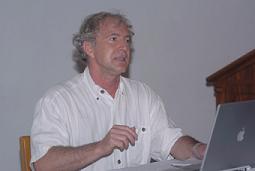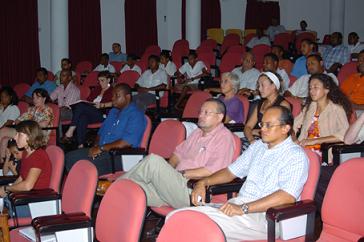Where research meets management |07 February 2005


Joseph Francois, the acting director for national parks and forestry in the Ministry of Environment and Natural Resources, told Nation on Friday about the potential for new research as part of an ongoing collaboration between the Ministry of Environment and Natural Resources and the Geobotanical Institute of Zurich.
Researchers from the Swiss institute detailed some of the past studies during the 12-year relationship at a presentation at the National Institute of Education attended by Minister Ronny Jumeau and other senior environment officials.
Cooperation between the two parties is likely to continue “for many years to come,” Mr Francois said, noting that researchers from the institute – like PhD students Christoph Kueffer and Eva Schumacher, who conducted studies in Seychelles over the past three years on the ecology of woody invasive species – helped to fill a scientific gap in Seychelles.
He said the ministry was aiming to tap into specific research topics that would match Seychelles’ ecological needs and improve conservation management.
Habitat restoration is expected to be one of the foremost management priorities. “We need to research which species grow well in certain areas,” he said. On Praslin, that research could be used to restore some of the areas hit by severe erosion.
“We hope to find an endemic species that could grow in such soil conditions,” he added. The non-native acacia plant, which can survive in the relatively poor soil common to Seychelles, has been imported to restore greenery in some cases, but Mr Francois said this was being done cautiously because of its potentially invasive nature, and that a native alternative would be preferable.
At Friday’s presentation, two forestry officers from the ministry – Hansel Simara and Terence Valentin – outlined details of a pilot project of habitat restoration at Mare aux Cochons.
The Geobotanical Institute’s coordinator of the programme, Dr Karl Fleischmann, called the most recent work on woody invasive species – which sought to explain why invasive species are so successful in Seychelles’ forests – the “most important milestone” to date in the 12-year partnership.
The study will lead to another proposed project for 2005-2008 to be conducted in Seychelles about nutrient cycling, which intends to look into how invasive species like Albizia may be able to change the makeup of forests, making the environment more suitable for itself and other invasive species while native plants suffer.
Future collaborative studies may also involve comparisons between different islands. Dr Fleischmann said the islands of Seychelles represented a special hotspot for biodiversity, not necessarily in terms of the number of endemic species but in the uniqueness of native flora.
The institute has carried out a wide range of research initiatives during the past decade, including studies on the conservation of Cousin and Cousine, biodiversity hotspots surrounding the Vallee de Mai as well as Fond Ferdinand, and a life history of the Coco de Mer.





